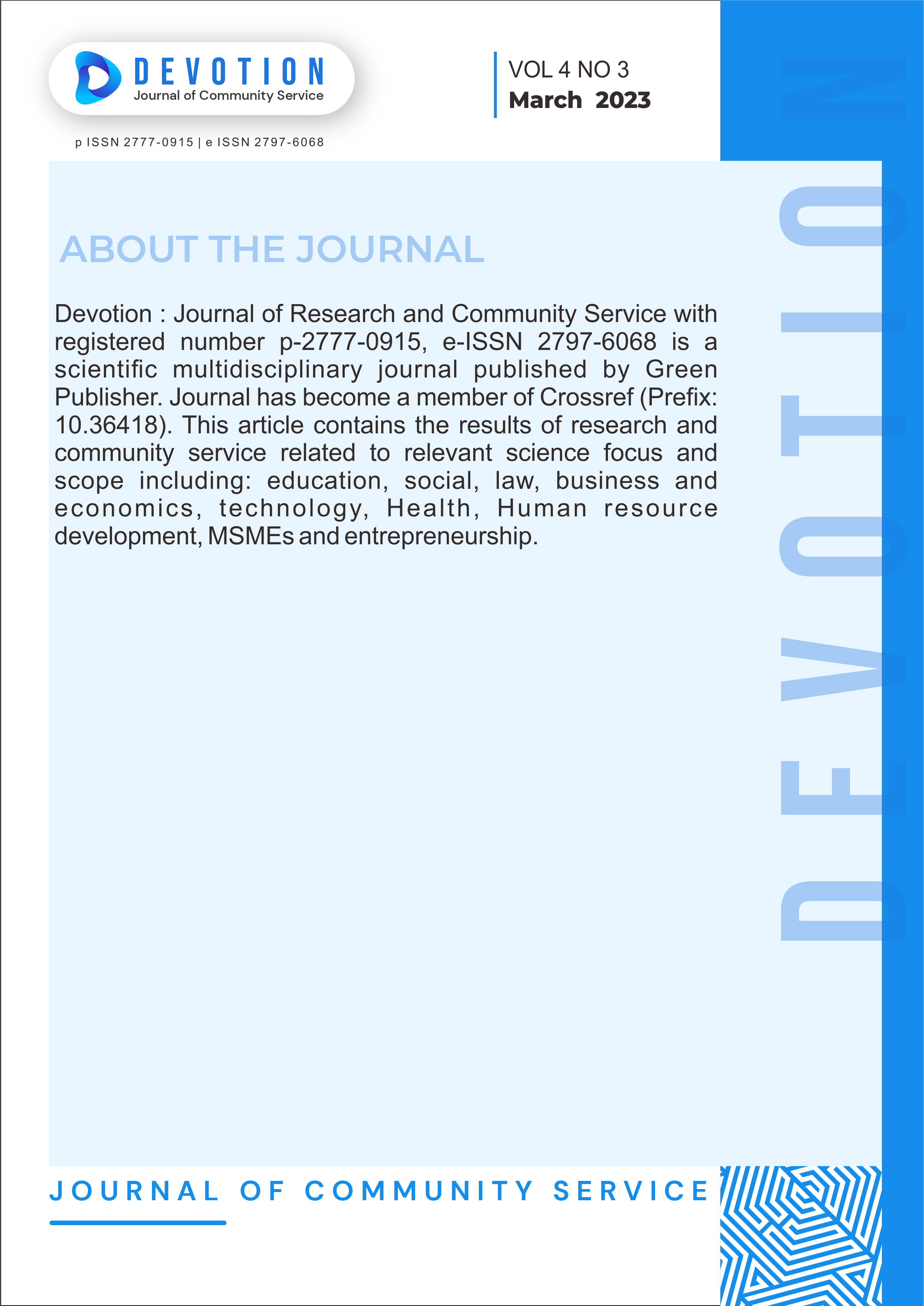Analysis of Multi-Storey Buildings and Occupational Safety in an Environmental Law Perspective
DOI:
https://doi.org/10.36418/devotion.v4i3.442Keywords:
Industry, multy-storey buildings, occupational safetyAbstract
The rapid development of the construction industry in addition to providing benefits also poses considerable risks, where this industry can be said to be vulnerable to work accidents (Ervianto, 2005). Occupational accidents in construction projects will be detrimental to the workforce, an unsafe and unhealthy work environment will also impact on the disruption of the workforce's performance. Based on the results and discussion of the researcher, namely the analysis of multi-storey buildings and work safety in the perspective of environmental law in the Kotamobagu City Library Building, the researcher sees in general that the construction of the Kotamobagu Library multi-storey building, both theoretically and the construction of the building has complied with the rules in the laws and regulations invitation contained in Law Number 28 of 2002 concerning Buildings. The Kotamobagu City Library Building also in its work has implemented the Occupational Safety and Health Management System in the Kotamobagu City Library Building Project very well. This can be seen by the K3 management procedures and K3 laws and regulations issued by the government and also by companies. The application of legal aspects to Occupational Safety and Health affects both the company and the workforce because if the company or workforce ignores OSH in carrying out their work they will be given legal sanctions because both the company and the workforce are legally bound. For example, if workers are working at heights and do not use seat belts, the safety officer can give sanctions to these workers according to the rules made by the company. Implementing K3 in accordance with statutory regulations can indirectly prevent the company from occurring accidents and occupational diseases as well as work violations. And also work can be carried out safely and efficiently. The researcher also draws the conclusion that the construction of a multi-storey building, Kotamobagu City Library Office built by the Kotamobagu Regional Government is in accordance with laws and regulations regarding environmental aspects. PP No. 27 of 1999 concerning Amdal. Law No. 22 of 2021 concerning Implementation of Environmental Protection and Management. PP No. 27 of 2012 concerning Environmental Permits and several other regulations which are not mentioned in the results of this study but are a source of reading for researchers. Apart from that, the Kotamobagu City Library Office Multi-storey Building has also met the green spatial requirements in urban areas.
Published
Issue
Section
License
Copyright (c) 2023 Nasir Katong, Sintya Paula Junaedy, Deby Christiani Sendow, Ahmad Yani Abas

This work is licensed under a Creative Commons Attribution-ShareAlike 4.0 International License.
Authors who publish with this journal agree to the following terms:
- Authors retain copyright and grant the journal right of first publication with the work simultaneously licensed under a Creative Commons Attribution-ShareAlike 4.0 International. that allows others to share the work with an acknowledgement of the work's authorship and initial publication in this journal.
- Authors are able to enter into separate, additional contractual arrangements for the non-exclusive distribution of the journal's published version of the work (e.g., post it to an institutional repository or publish it in a book), with an acknowledgement of its initial publication in this journal.
- Authors are permitted and encouraged to post their work online (e.g., in institutional repositories or on their website) prior to and during the submission process, as it can lead to productive exchanges, as well as earlier and greater citation of published work.













